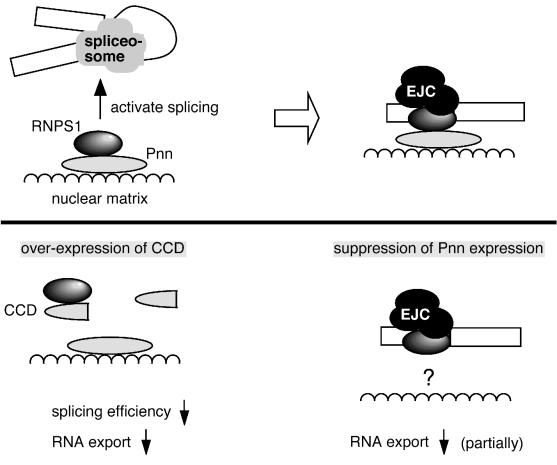FIG. 8.
Model of a potential role of Pnn in mRNA processing and export. (Upper) Pnn probably functions to attach RNPS1 to nuclear components such as nuclear matrix, where RNPS1 activates splicing and joins the EJC. Pnn is associated with spliced mRNPs likely via its interaction with the EJC component RNPS1. (Lower) Pnn by itself is not crucial for splicing. However, overexpression of the Pnn CCD titrates RNPS1 and thereby results in splicing inhibition and subsequent nuclear export blockage. Depletion of Pnn protein shows a partial effect on bulk mRNA export. We suspect that Pnn only serves as a platform for mRNP assembly, and its role can be substituted by other matrix-associated proteins. Finally, Pnn is restricted in the nucleus and thus likely becomes detached from mRNPs prior to mRNA transport through the nuclear pore complex.

